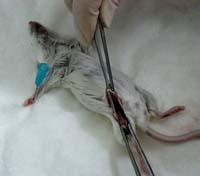Sphingolipids for the treatment of various diseases
Sphingolipids are a type of basic fat in the cell structure and in the regulation of metabolism. They are important regulators of biological functions such as cell proliferation. They also regulate the death of cells. Cells often die from toxic problems or bacterial or viral infections. However, they are often programmed to kill cells. His death is regulated even if he may suffer any infection or trauma. This physiological process is called apoptosis.

This process is regulated by a number of sphingolipids, so they are important and interesting to investigate. Suppose in our metabolism there is an alteration that is causing the growth of a tumor. This process may stop by adding several sphingolipids. Somehow we would be treating cancer. Currently sphingolipids are being used in different trial clinics, obtaining good results.
It may also happen that cells die slowly rather than grow. This produces serious neurodegenerative diseases such as Alzheimer's, Parkinson's, etc. Many times neurons die because they receive incorrect signals. Therefore, we must try to interrupt that death or increase the connections between neurons to somehow relieve the distance between them. Several sphingolipids are able to do so, they are able to grow and stay alive.
Regulation of metabolism
Currently, UPV/EHU researchers are studying how sphingolipids regulate cell metabolism. To do this, they cause alterations in cellular metabolism and then try to recover the initial state with the help of synthetic sphingolipids. In short, their goal is for these sphingolipids to be used for the treatment of various diseases.
Therefore, they spend a lot of time researching how sphingolipids control atherogenic processes (formation of atherogenic plates). These atheroma plaques are mainly produced by accumulation of cholesterol in the arteries. Cholesterol is transported in blood to molecules such as lipoproteins. Well, one of the components of these lipoproteins is sphingomyelin, a sphingolipid. Depending on the oxidation state of the chemical structure of this sphingolipid, this molecule has a greater participation in atherogenesis, transports better or worse cholesterol and causes damage to the arteries. Therefore, the Department of Biochemistry and Molecular Biology aims to understand how sphingolipids can contribute to the development of atherosclerosis.
Another disease being studied is chronic obstructive pulmonary disease. This is a common disease in which the sphingolipids involved produce various inflammatory reactions. The aim of the researchers is to investigate the origin of the disease and how to return the altered tissues to their initial state.

How do they do it?
In general, the research process is similar in all cases. For example, in the formation of atheroma plaques, in which macrophages mainly participate, UPV/EHU researchers isolate monocytes from fieros from mice --monocytes are undifferentiated macrophages. These monocytes are incubated in Petri dishes in an appropriate growing environment. In addition, they add the growth factor that cells need to grow, such as cytokines M-CSF. After four or five days, these cells separate and become macrophages and leave them ready for research.
Then, if they want to cause the death of macrophages, the conditions change and incubate them without means of breeding or cytokines. As a result, cells die from apoptosis. With the addition of several sphingolipids in the same conditions, they analyze the possible incidence of cell death. Phosphate 1 ceramide (a sphingolipid) has been found to block cell death. It is the sign of life. On the contrary, the non-phosphorylated molecule, that is, ceramide, has the opposite effect. It is the sign of death. They have investigated how and why both mechanisms occur and already know part of it.
The next step would be its application to animal models, for example, causing atherogenesis and trying to solve the problem with sphingolipids throughout the body.






